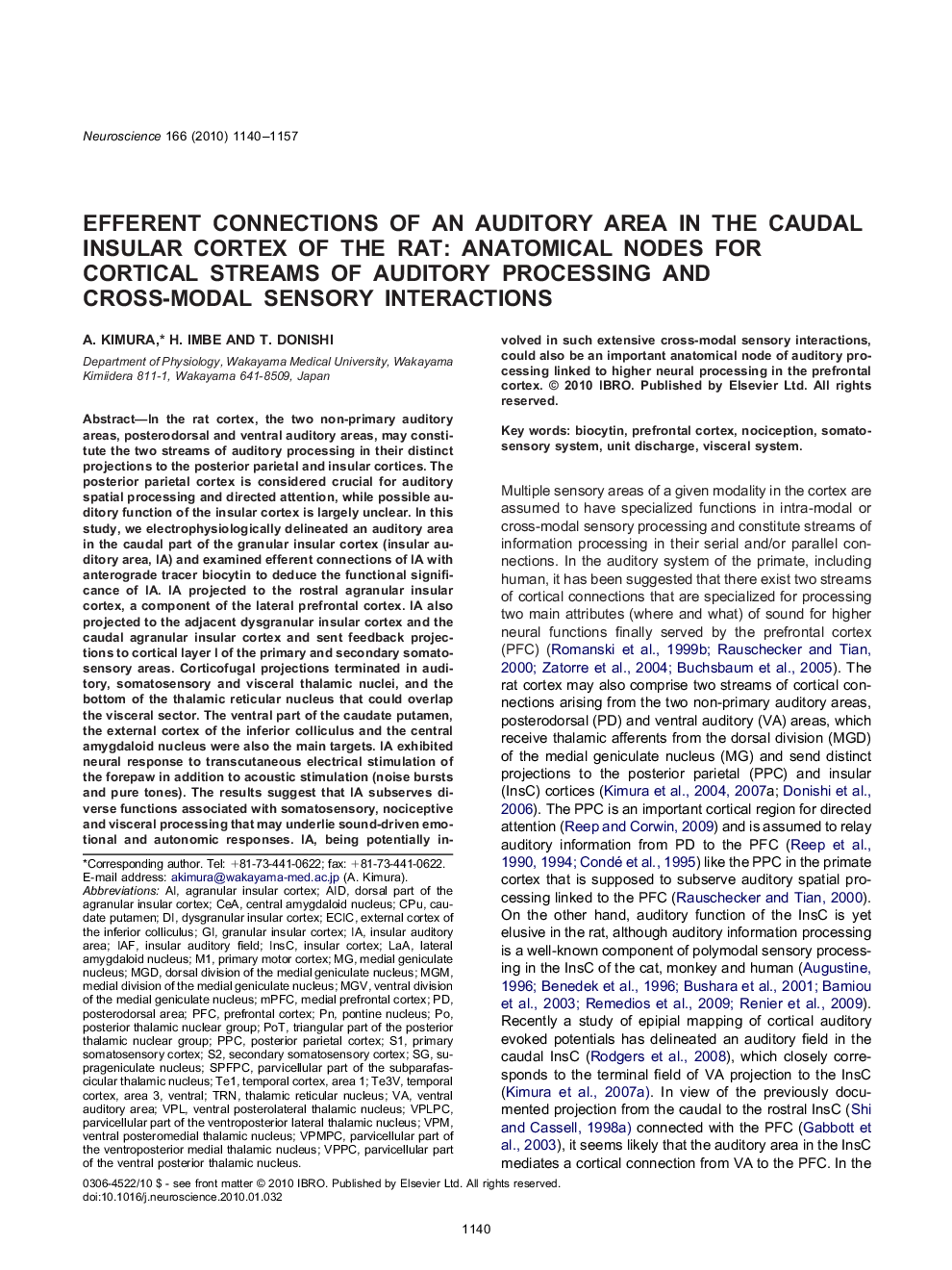| Article ID | Journal | Published Year | Pages | File Type |
|---|---|---|---|---|
| 4339393 | Neuroscience | 2010 | 18 Pages |
Abstract
In the rat cortex, the two non-primary auditory areas, posterodorsal and ventral auditory areas, may constitute the two streams of auditory processing in their distinct projections to the posterior parietal and insular cortices. The posterior parietal cortex is considered crucial for auditory spatial processing and directed attention, while possible auditory function of the insular cortex is largely unclear. In this study, we electrophysiologically delineated an auditory area in the caudal part of the granular insular cortex (insular auditory area, IA) and examined efferent connections of IA with anterograde tracer biocytin to deduce the functional significance of IA. IA projected to the rostral agranular insular cortex, a component of the lateral prefrontal cortex. IA also projected to the adjacent dysgranular insular cortex and the caudal agranular insular cortex and sent feedback projections to cortical layer I of the primary and secondary somatosensory areas. Corticofugal projections terminated in auditory, somatosensory and visceral thalamic nuclei, and the bottom of the thalamic reticular nucleus that could overlap the visceral sector. The ventral part of the caudate putamen, the external cortex of the inferior colliculus and the central amygdaloid nucleus were also the main targets. IA exhibited neural response to transcutaneous electrical stimulation of the forepaw in addition to acoustic stimulation (noise bursts and pure tones). The results suggest that IA subserves diverse functions associated with somatosensory, nociceptive and visceral processing that may underlie sound-driven emotional and autonomic responses. IA, being potentially involved in such extensive cross-modal sensory interactions, could also be an important anatomical node of auditory processing linked to higher neural processing in the prefrontal cortex.
Keywords
PFCSPFPCVPpcVPMpcTe3VTe1iNSCVPLMGDMGVTRNVPMIAFECICMGMCPUPPCLAAMPFCCeABiocytinUnit dischargePotSomatosensory systemnociceptionprefrontal cortexprimary somatosensory cortexprimary motor cortexexternal cortex of the inferior colliculusinsular cortexAgranular insular cortexGranular insular cortexdysgranular insular cortexmedial prefrontal cortexposterior parietal cortexSecondary somatosensory cortexThalamic reticular nucleusSuprageniculate nucleusVentral posteromedial thalamic nucleusventral posterolateral thalamic nucleuscentral amygdaloid nucleusLateral amygdaloid nucleuspontine nucleusmedial geniculate nucleusCaudate putamenAIDposterior thalamic nuclear group
Related Topics
Life Sciences
Neuroscience
Neuroscience (General)
Authors
A. Kimura, H. Imbe, T. Donishi,
